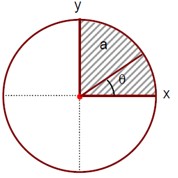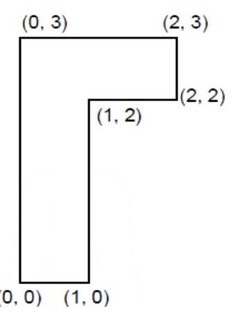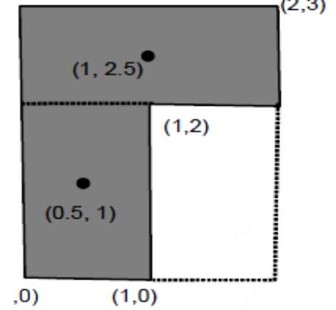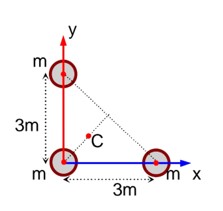Centre of Mass
Get insights from 10 questions on Centre of Mass, answered by students, alumni, and experts. You may also ask and answer any question you like about Centre of Mass
Follow Ask QuestionQuestions
Discussions
Active Users
Followers
New answer posted
3 months agoContributor-Level 10
The x and y coordinates of the center of mass are given by:
x? = y? = 4a / 3π
New answer posted
3 months agoContributor-Level 9
From conservation of momentum:
2*4 = 2v? + mv?
Given v? = 1 m/s (interpreted from intermediate steps)
8 = 2 (1) + mv?
mv? = 6 . (i)
From coefficient of restitution (e=1 for elastic collision):
e = (v? - v? )/ (u? - u? )
1 = (v? - v? )/ (4 - 0)
-1 = (v? - v? )/ (0 - 4) (as written in the image)
⇒ 4 = v? - 1
⇒ v? = 5 . (ii)
Put (2) in (1), m (5) = 6
m = 1.2kg
New question posted
4 months agoNew answer posted
4 months agoContributor-Level 10
You should know that when the shift in the centre of mass occurs, you can use the principle of moments. With this logic, we can see the shift from the original body as the combination of two parts. The one that remains part and the other that is removed. The formula for the shift is the product of the mass removed and its distance of its centre of mass from the original centre of mass, which is divided by the mass of the remaining part.
New answer posted
4 months agoContributor-Level 10
To study centre of mass, you need to follow these steps.
- Learn the definition with examples. Most importantly, focus on visualising it.
- Then approach the centre of mass formulas for discrete particles and continuous bodies.
- Practice finding the centre of mass for symmetrical and asymmetrical bodies.
- Solve problems on the motion of centre of mass and its applications in collisions of particles.
New answer posted
4 months agoContributor-Level 10
Well, the centre of mass is a single point. It does not rotate by itself. But an object or a system of particles can rotate about its centre of mass. The individual particles of a system can move around the centre of mass, and these particles can make the centre of mass move in a straight line at a constant velocity unless there is a net external force. This is pretty much Newton's First Law, because we are talking about motion in general.
New answer posted
4 months agoContributor-Level 10
Centre of mass becomes easier to calculate when you are confident with concepts such as weighted average and mass distribution. But this concept can be challenging when applying to complex systems and in combination with rotational motion. Either way, you will need to build a solid foundation with kinematics, Newton's Laws, and work-energy principles before approaching the centre of mass concept in the Systems of Particles and Rotational Motion chapter in Physics Class 11.
New answer posted
4 months agoContributor-Level 10
Yes, it's an important concept to tackle JEE Main questions on rotational mechanics, rigid bodies, and collisions. Learning about the centre of mass simplifies complex motions of objects by treating the entire mass into a single point. In exams such as JEE, questions on centre of mass are also interrelated with other advanced concepts in physics. So, a thorough conceptual understanding of it is essential.
Taking an Exam? Selecting a College?
Get authentic answers from experts, students and alumni that you won't find anywhere else
Sign Up on ShikshaOn Shiksha, get access to
- 66k Colleges
- 1.2k Exams
- 680k Reviews
- 1800k Answers




